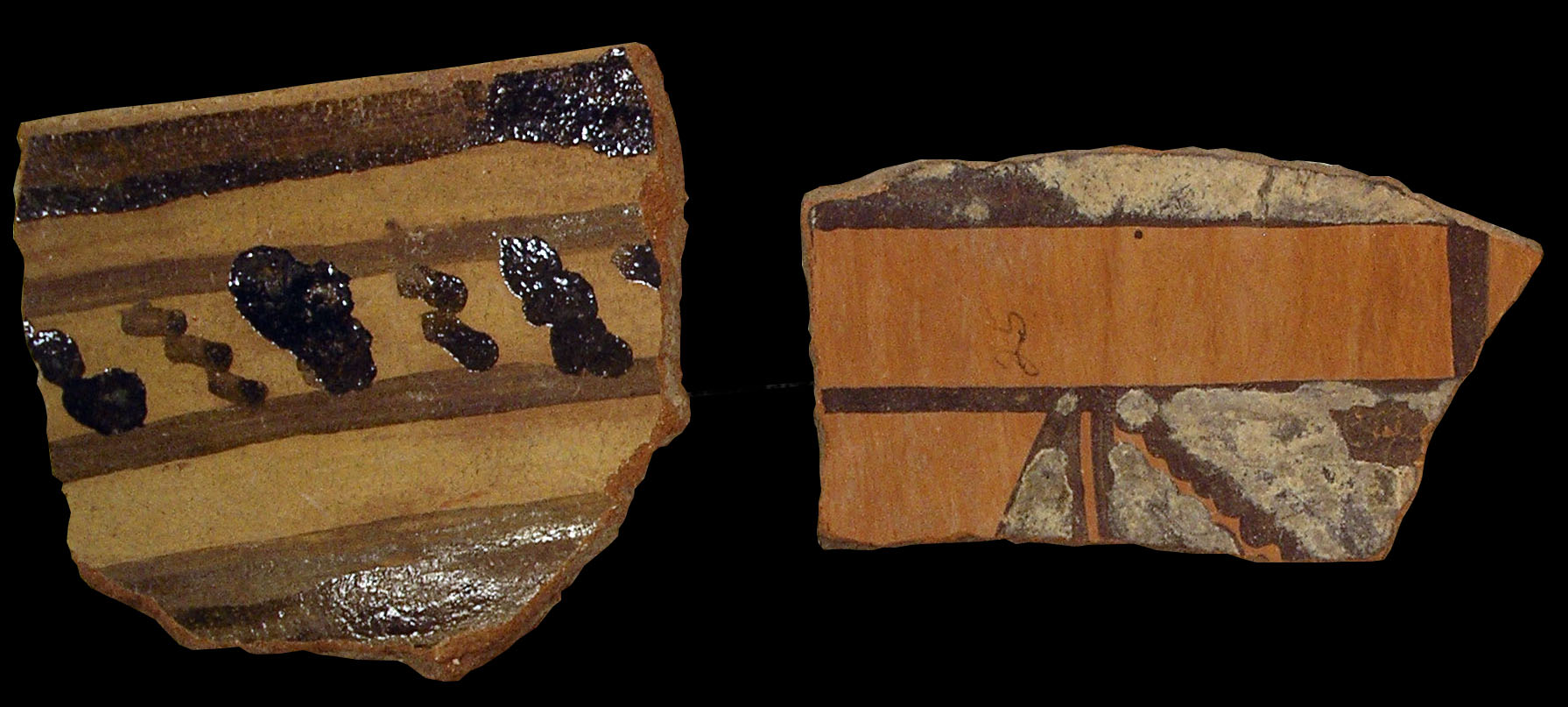Rio Grand Glaze Ware is a prehistoric through historic ware that was made in the Rio Grande Valley and adjacent valleys from Santa Fe to the south, Elephant Butte Reservoir to the north, and the Rio Puerco to the east.
Types found in the American Southwest Virtual Museum include: San Clemente Glaze Polychrome and Rio Grande Glaze A.
Archaeological Culture: Ancestral Puebloan
Date Range: A.D. 1300-1700.
Construction: By coiling and scraping.
Firing: In an oxidizing atmosphere.
Temper: Crushed rock.
Surface Finish: Bowls, always slipped on both surfaces, except Houck Polychrome and Wingate Corrugated (which are slipped only on the interior); jars, always slipped on the exterior (only); slip usually heavy, usually well-polished, frequently powdery, occasionally flakes, occasionally crazed; sometimes slightly bumpy. Wingate Corrugated not smoothed.
Surface Color: Red, pinkish, brownish, buff, cream (Querino Polychrome, exterior), orange, light yellow, rarely slate gray in part (Klageto Black-on-yellow, sometimes), in part white (some types); color core and surface color generally contrast.
Forms: Bowls (predominate) and jars.
Vessel Thickness: 2.8 to 8.2 mm.
Decoration:
- Paint: Black, white, red; black usually glaze, sometimes gritty, sometimes vitreous, occasionally weak and watery.
- Pigments: Usually copper, lead, and some manganese; occasionally iron-carbon when non-glaze; white pigment, usually somewhat chalky and fugitive, presumably kaolin; red pigment dull, thin and watery, sometimes thick, almost like slip, probably hematite.
- Design: Bowl interiors, usually black paint on red slip, sometimes black and black-and-red on white slip, sometimes black-and-white on red slip; exteriors, usually black, white or black-and-white on a red slip, sometimes black on white slip; jar exteriors same as bowl interiors.
Comparisons: San Juan Red Ware, surface never cream; carbon streak common; surface color and core rarely contrast; temper, about equal amounts of opaque angular fragments and quartz sand, conspicuous through slip in some types; mica like flakes fairly frequent in some types; slip always red when present, several types unslipped; jars fairly frequent, predominant in one type; black paint always non-glaze.
Other Names: Red Ware, Little Colorado Ware, Little Colorado Red Ware.
Compiled from the following sources:
Carlson, Roy. (1970) White Mountain Redware: A Pottery Tradition of East Central Arizona and Western New Mexico. Anthropological Papers of the University of Arizona, No. 19. Tucson.
Colton, Harold S., and Lyndon L. Hargrave. (1937) Handbook of Northern Arizona Pottery Wares, Museum of Northern Arizona Bulletin 11, Flagstaff, Arizona.
Compiled by:
April Peters, Northern Arizona University Anthropology Laboratories

